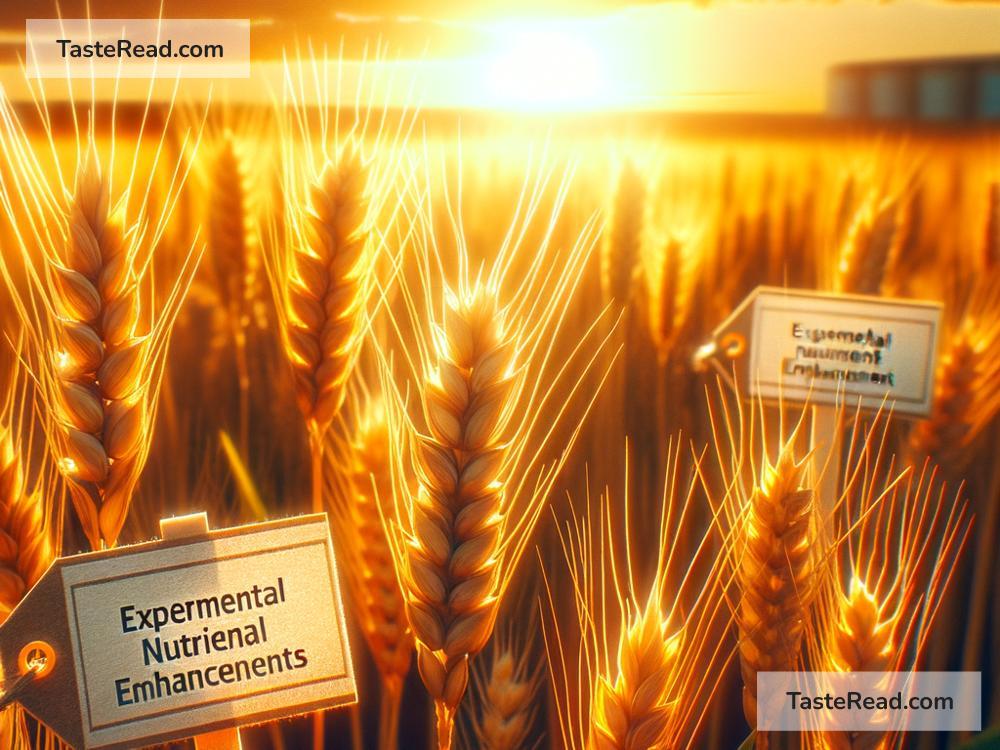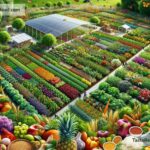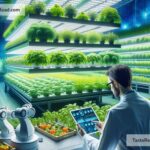The Future of Biofortification in Crops: A Path to Healthier Food and Healthier Lives
In a world where millions of people face hunger and malnutrition, scientists and farmers are working together to make food healthier and more nutritious. One exciting solution to this problem is biofortification—a method of growing crops that are naturally packed with more vitamins and minerals. Biofortification holds great promise for helping people live healthier lives, especially in places where nutritious food is not easy to find. Let’s explore what biofortification is, how it works, and what the future might hold for this fascinating technology.
What is Biofortification?
Biofortification is the process of improving the nutritional quality of crops while they are still growing. This means making plants naturally richer in essential nutrients like iron, zinc, vitamin A, and protein. Unlike adding nutrients to food during production (like fortified cereal), biofortification works from the inside out—it focuses on enhancing the plants themselves.
Scientists use different methods to achieve biofortification. Some approaches involve traditional plant breeding, where researchers select crop varieties that already have higher nutrient levels and breed them together. Other methods use modern tools like genetic engineering to introduce traits that help plants produce or store more nutrients. Another method relies on soil management—if farmers enrich the soil with key minerals, plants can absorb those nutrients while growing.
Why is Biofortification Important?
Malnutrition remains a major global challenge. Over two billion people worldwide suffer from “hidden hunger,” which is when they don’t get enough essential nutrients from their diets. This can lead to serious health problems like stunted growth, weakened immune systems, and poor brain development. Many of these people live in regions where access to diverse, nutritious foods is limited. They rely on staple crops like rice, maize, and wheat for most of their calories—but these crops are often low in key vitamins and minerals.
By biofortifying staple crops, scientists can help fight malnutrition directly. For example, Golden Rice is a type of rice that has been biofortified to contain higher levels of vitamin A. Eating this rice can prevent vitamin A deficiency, which is a leading cause of blindness and immune system problems in children. Similarly, biofortified maize and beans with higher levels of zinc can strengthen immunity, while iron-rich crops can reduce anemia.
Current Successes in Biofortification
Biofortification is already making a difference in many parts of the world. Organizations like HarvestPlus and the International Maize and Wheat Improvement Center (CIMMYT) are leading efforts to develop and deliver biofortified crops to farmers. Some examples of successful biofortified crops include:
- Golden Rice: Developed to address vitamin A deficiency in Asia, where rice is a staple food.
- Zinc-Enriched Wheat: Helping reduce zinc deficiency in South Asia, where wheat is a dietary staple.
- Iron-Fortified Pearl Millet: Popular in parts of Africa and India, this millet supports efforts to combat anemia.
- Vitamin A-Rich Cassava: Widely grown in sub-Saharan Africa to improve vitamin A intake among rural populations.
Farmers in countries like India, Bangladesh, Uganda, and Brazil are already growing biofortified crops and providing healthier food for their communities. Governments and nonprofits are supporting these efforts through education programs, financial aid for farmers, and infrastructure to improve seed distribution.
The Future of Biofortification: What’s Next?
The future of biofortification looks promising, but there are challenges to overcome. Scientists and policymakers are working on making biofortification more efficient, affordable, and widespread. Here are some important areas to focus on:
-
Expanding to More Crops: While biofortification has been successful for certain staples, more work is needed to biofortify other crops like fruits, vegetables, and legumes. Expanding the variety of biofortified foods will help reach more people in diverse diets.
-
Greater Access for Farmers: Biofortified seeds need to be affordable and easily available for farmers everywhere. Partnerships between governments, research institutions, and local communities can help scale up production and distribution.
-
Educating People: Many farmers and consumers are still unaware of biofortification and its benefits. Governments and health organizations will need to raise awareness so people embrace biofortified crops as part of their diets.
-
Advancing Technology: Genetic engineering can make biofortification faster and more precise. However, some countries have concerns about genetically modified organisms (GMOs). Scientists and policymakers need to ensure biofortification technologies are safe, ethical, and accepted by the public.
-
Climate Change: Global warming poses challenges for agriculture, including making soils less fertile and reducing crop yields. Scientists will need to biofortify crops that can withstand tougher growing conditions while still providing high levels of nutrients.
-
Collaborative Efforts: The fight against malnutrition requires teamwork. Governments, researchers, nonprofits, and farmers must work hand-in-hand to make biofortification a global success. Investments in biofortification research and programs will be crucial for long-term impact.
Why Biofortification Matters for a Healthier Future
Biofortification has the potential to change the way we fight malnutrition and hunger. By enriching the food we grow and eat with nutrients essential for human health, we can help millions of people live fuller, healthier lives. As science continues to advance, biofortified crops will play a vital role in creating a world where no one suffers from nutrient deficiencies.
While challenges remain, the future of biofortification is bright. By supporting farmers, innovating technology, and spreading awareness, we can make nutritious food accessible to everyone. Biofortification is not just about improving crops—it’s about improving lives and building a healthier, more sustainable future for all.


